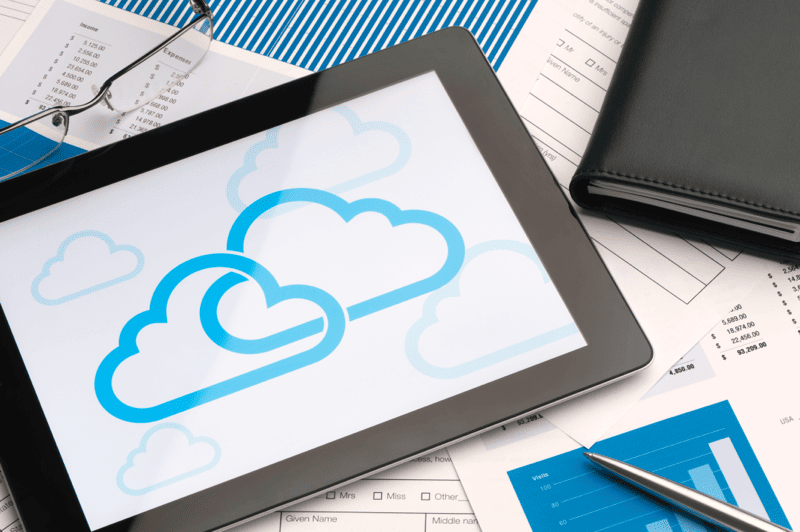Regardless of the sector and size of the company, with all the global uncertainties facing the world and the economy, the great need for planning security is common to all.
What role does cloud technology play in this context?
In view of global events and developments, it is more difficult than ever to make predictions. World events around COVID-19, geopolitical tensions and tight financial markets all influence each other.
Sid Nag, Vice President Analyst at Gartner addresses the current inflationary pricing pressures and macroeconomic circumstances in press release and speaks of a push and pull effect these factors are having on cloud spending. At the same time, he clarifies,“Cloud computing will continue to be a bastion of safety and innovation, supporting growth during uncertain times due to its agile, elastic and scalable nature.” Gartner – Press Release/31.10.2022
Cloud trends: the evolution from hybrid to multi-cloud.
The significance of being able to access infrastructure, applications and data independently of location was clearly demonstrated to many companies during the 2020 and 2021 pandemic. Under enormous time pressure, companies had to enable their employees to work from home office and to do so without compromising the security of sensitive data. This massively accelerated the digital transformation of the entire economy and the shift of business processes to the cloud.
Until 2022, IT managers preferred to adopt hybrid cloud solutions, where data, applications as well as services are hosted partly on-site on their own servers as well as in the cloud. The increasing shift to the use and provision of digital services is causing the cloud market to boom. As the functionality of cloud services increases, there are more and more opportunities for companies of all sizes and industries to profit from cloud investments. As a result, a clear trend towards a multi-cloud approach was evident in 2022 and will continue in 2023.
The various advantages resulting from the increased multi-cloud trend naturally depend on the type of services used. But those responsible for the digital change are increasingly less oriented towards the large complex hyperscalers, and are instead combining different cloud providers whose offerings match the specific goals of their company.
What currently makes cloud computing so attractive:
- Cloud usage can drastically reduce the investment in hardware, the workload for administration, maintenance and updating of applications as well as operating systems.
- Cloud services create increased reliability by allowing users to access data and applications from anywhere on any device.
- The scalability of the services also enables companies to react appropriately to any influences. For example, projects can be flexibly terminated, paused or expanded on a success basis from one day to the next.
- Numerous cloud services offer the option of acting sustainably through so-called pay-per-use models and reducing costs despite the current energy crisis. This model allows customers to pay only for actual use of the resources.
- It is beneficial for many companies that capital expenditure (capex) can be shifted to operating expenditure (opex) through the introduction of service models.
Worldwide end-user spending on public cloud services is forecast to grow 20.7% to total $591.8 billion in 2023, up from $490.3 billion in 2022, according to the latest forecast from Gartner, Inc. This is higher than the 18.8% growth forecast for 2022. Gartner – Press Release/31.10.2022
Efficiency and cost benefits clearly speak for the implementation of modern cloud solutions. It is mostly security concerns of the companies that are listed as the main reason to wait with the (complete) migration to the cloud.
Migration to the cloud: is the skepticism justified?
Due to the massive increase in cyber attacks as part of the digital transformation, cyber security is more relevant than ever before. IT decision-makers therefore have a valid responsibility to develop security concepts and to check whether cloud-based providers to whom services are outsourced comply with legal, ethical and regulatory requirements.
Cloud security is the complex interaction of processes, policies, technologies that ensure the protection of information and systems. Sub-areas include personnel, process, application and infrastructure security, each of which is subject to individual security rules. For the careful implementation of a complete cloud security strategy, the individual adaptation of this to the company is necessary.
However, anyone who is put off by the scope of a mature security concept for the cloud should bear in mind that cloud computing is no less secure than provision by means of classic IT. The rapid pace of digitization does not stop at cybercrime. One aspect often overlooked by cloud technology skeptics, is the cutting-edge technology and smart strategies now being used by cybercriminals.
So, security challenges are steadily increasing regardless of the decision to migrate to the cloud or not. In fact, many cloud providers offer security standards through advanced technology and software that organizations with traditional IT cannot match. One example is integrated monitoring and backup of data, applications and resources 24/7.
Just as cloud technology can centralize applications and data, it can also centralize security. Thus, cloud computing uniquely provides visibility, control and better protection against attacks.
Best practices – to stay on top of the future
Cloud services serve and drive the desire of customers to access content, products and services easily and quickly. Meeting this need has increased the requirement for enterprises to rely on cloud solutions. While a choice of cloud providers and services is necessary to meet the individual needs of their business and maximize the benefits, by using multiple services, enterprises risk losing profitability, security and agility through the lack of transparency of the services they use. In the long run, therefore, the companies that choose a cloud solution that gives them control and visibility will be the ones that remain competitive and benefit the most.
oneclick™ is such an orchestration platform that provides maximum flexibility and security, with minimized complexity. Using the oneclick™ platform, different resources (on-premise and/or in the cloud), applications and data can be connected, administered and delivered via a single portal. The entire IT can be managed via a central management interface.
State-of-the-art, highly encrypted streaming technology ensures that no attackers or malware can penetrate the connected corporate networks from the outside. Virtualization of the client desktop infrastructure allows users to access their applications from any device, regardless of location, while data never leaves the secure location. Remote access with oneclick™ is so secure that it is covered by insurance from the product provider Victor Deutschland GmbH and the risk carrier Württembergische Versicherung AG. In addition to cyber assurance, another security component of oneclick™ is the certification of oneclick AG’s information security management system (ISMS) according to ISO 27001. Here you can find more information about the security architecture of the oneclick™ platform.
Zero Trust is a key aspect for more security in the cloud. Learn more about Zero Trust and and how to protect sensitive corporate data.


